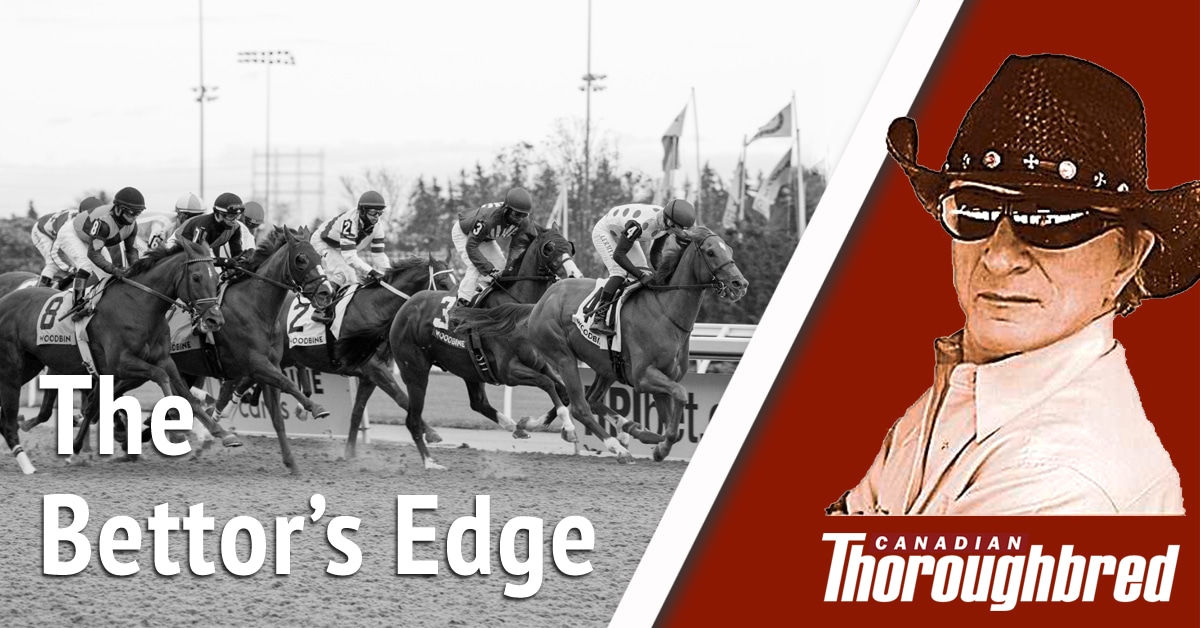What’s your Best Bet on whatever card or day of racing you’re playing? I’m talking about a jump-off-the-page horse you love. Such a horse doesn’t guarantee riches, but it often will produce a winning day if you play it right. Without such a solid horse, you’ll be forced to dabble and dabbling can often go awry.
Not only can a Best Bet produce a return in the mutuel pool, but think of it as your base for wagers extending into races beyond your Best Bet. That’s how to maximize your returns.
Let’s take Saturday’s card at Woodbine as an example. Race 3 held my Best Bet and was likely a Best Bet for other players, too. #3 Confusing was a horse dropping in class after showing blazing speed in higher classes. His Equibase speed figure in a previous race was 144. That’s over-the-top huge. You had to know he’d be on the lead and likely would put away the rest of the field because he was dropping in class. Sure enough, the three-year-old chestnut gelding won by eight lengths and paid $6.40 to win.
Okay, now let’s examine how you might have maximized your return by playing mere $5 tickets on exotics connected with your best bet:
RACE 2: This was non-winners of two races lifetime where horses who get the early lead to themselves are strong contenders. Sure enough, #2 Mi Corazon got the lead. If you played her in a $5 double to your Best Bet in the following race, you collected $122.
RACE 3: This is your Best Bet race (#3) which returned $6.40 for each $2 win bet.
RACE 4: This was a turf route race in which you would have looked for horses with the highest Tomlinson ratings in the DRF. The highest Tomlinson horse, #8 with 412, won and a double with your Best Bet paid $69.25 for a $5 wager and a $5 pick-3 paid $322.75.
RACE 5: This was a maiden race on the turf and #2 and #5 had the highest Tomlinson of 411. If you played them both in $5 pick 3s to your Best Bet and the highest Tomlinson in race 4, you would have collected $475.50.
RACE 6: This was the fifth leg of the pick-5 that started in race 2 if you chose to play it. It was a 7 ½-furlong race, a specialist distance, with #3 having an 89 speed figure and #6 having a 90 speed figure. #3 won and the 20-cent pick-5 paid $459.
I could go on. But note how capitalizing on a Best Bet can produce juicy returns for a small investment. Will you look at your next Best Bet as an opportunity to really fatten your bankroll? See Saturday’s program with the above races here.
Did you know the top two Breeders’ finishers hadn’t even been nominated?
Did you know that the top two finishers in Sunday’s Breeders’ Stakes, #11 Touch’n Ride and #12 Elysian Field, were not initially even nominated to race in the $400,000 stakes race? Their trainers, Layne Giliforte and Mark Casse respectively, paid a fee — $12,500 — to supplement them into the race when the entries were drawn.
All of which should show you that horses “supplemented” into stakes races usually are very live. Horses are supplemented into a stakes race when connections believe their horses have the talent to be strong contenders in the race. They may perceive the field as being weak.
Four horses, in fact, were supplemented into the Breeders’ Stakes. And how would you know that? By Googling “Woodbine overnight entries” and noting the horses that have (S) next to their names in the stakes race.
The other two horses were #6 Tito’s Calling who finished fifth in the race, and #15 Enjoythesilent who was placed on the also-eligible list.
If you were previously unaware of the “supplemented” side to stakes races, now you know and can capitalize on this information in future stakes races. Simply put, beware of supplemented horses!


